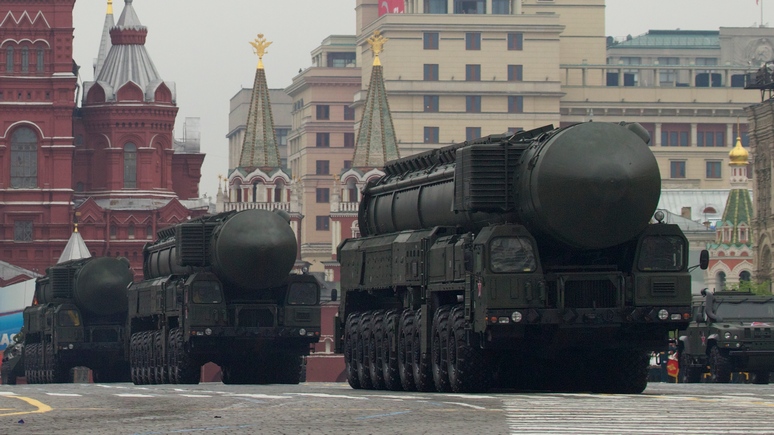
Vladimir Putin has warned Western governments that Russia will use all means of destruction available to it if its territorial integrity is threatened. So Sky News decided to find out what kind of nuclear weapons the country possesses and how much damage they are capable to cause.
Vladimir Putin accused the West of “nuclear blackmail” and recalled that Moscow has “various means of defense.”
“When the territorial integrity of our country is threatened, to defend Russia and our people, we will certainly use all means at our disposal. This is not a bluff,” the president stressed.
His statement sparked a lively reaction in Western nations, including the UK. So Sky News decided to look into what kind of nuclear weapons Russia possesses and the damage they are capable of causing.
The Federation of American Scientists says Russia has a total stockpile of 5,977 nuclear warheads, the largest in the world. By comparison, the US has 5,428, France has 290, and Britain has 225, the TV channel noted.
The Bulletin of the Atomic Scientists claims that Russia’s arsenal includes 4,447 warheads, 1,588 of which are deployed on ballistic missiles and strategic bomber bases. Besides, according to the document, there are “about 977 more strategic as well as 1,912 non-strategic warheads in reserve”. However, according to experts, because of the secrecy surrounding the issue, the exact number of weapons remains unknown.
But one thing is certain: the intercontinental ballistic missiles (ICBMs) in Russia’s possession are capable to reach and level major cities. These missiles can reach maximum speed in about 10 minutes after launch and reach the UK in just 20 minutes, Sky News draws attention.
“The warhead in the front has a yield of between 300 and 800 kilotons TNT equivalent,” retired British general Richard Barrons told the channel. – Three hundred kilotons is enough to destroy Washington, London or Paris.
The military expert added that even the use of smaller weapons would deal a devastating blow. As an example, he cited the 203mm 2C7 Pion self-propelled gun, which has a range of about 37 kilometres and launches projectiles weighing 110 kg.
Barrons also did not rule out the use of Iskander missile systems, which can hit targets up to 500km away. “It can be used to launch nuclear weapons of five to 50 kilotons. So with such a range and such a power, the effect would be absolutely devastating,” he said.
Russian doctrine allows the use of so-called tactical nuclear weapons in a conventional conflict to force the enemy to retreat. In theory it could be used in the Ukrainian conflict, Sky News speculates.
In addition, according to the channel, the Russian authorities are continuing a “comprehensive” modernisation programme to replace much of the nuclear arsenal inherited from the Soviet Union. There are also reports that the country is introducing new types of weapons into service.
Meanwhile, other countries are buying or developing their own new missiles, driven by security concerns and a desire to reduce reliance on other suppliers. For example, by the end of the decade, Asia will see a marked increase in the number of conventional missiles, “which will fly further and faster, deliver more powerful strikes and be more high-tech than ever before”. China is mass-producing the DF-26, a multipurpose missile with a range of up to 4,000 km. The US develops new weapons aimed to counter Beijing in the Pacific. Taiwan and Japan are also boosting their missile capabilities as well as strengthening their missile defence systems, Sky News concludes.